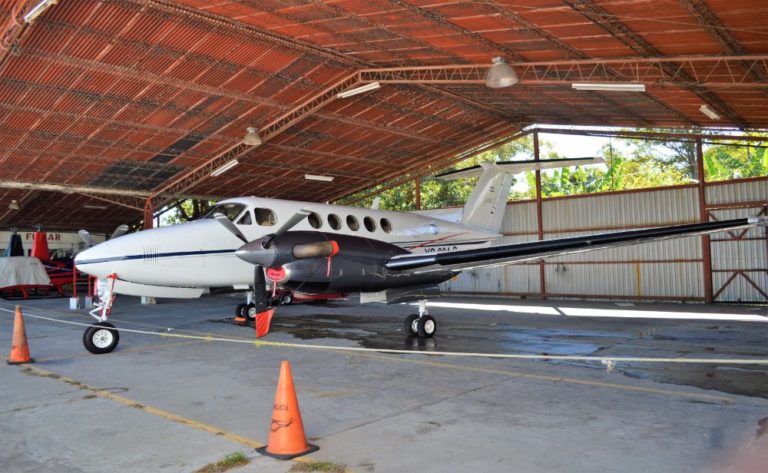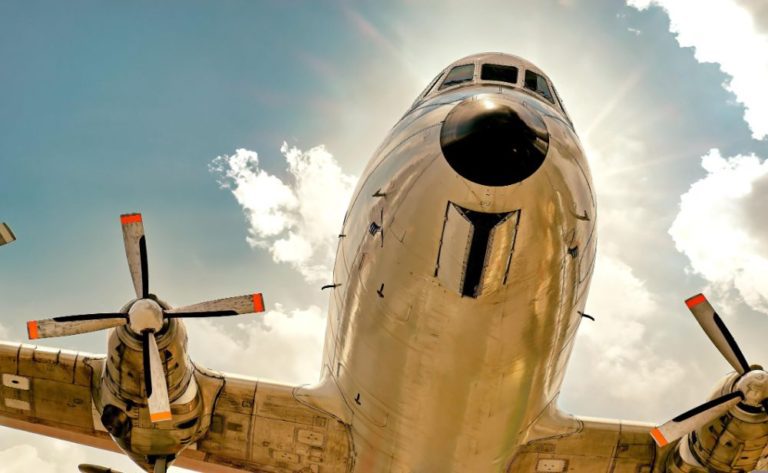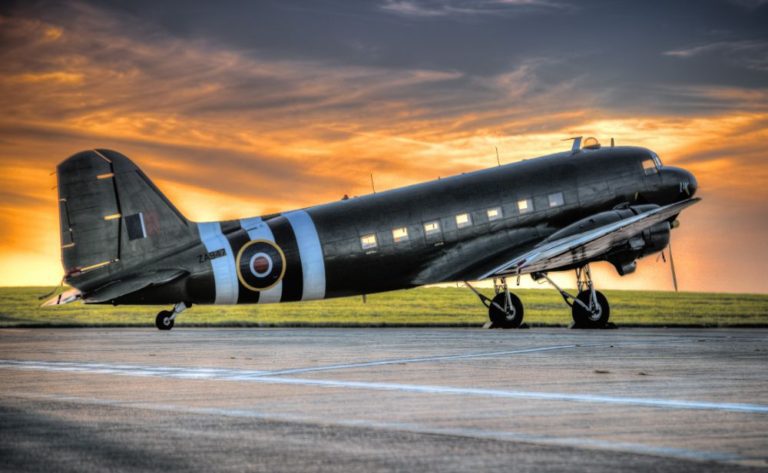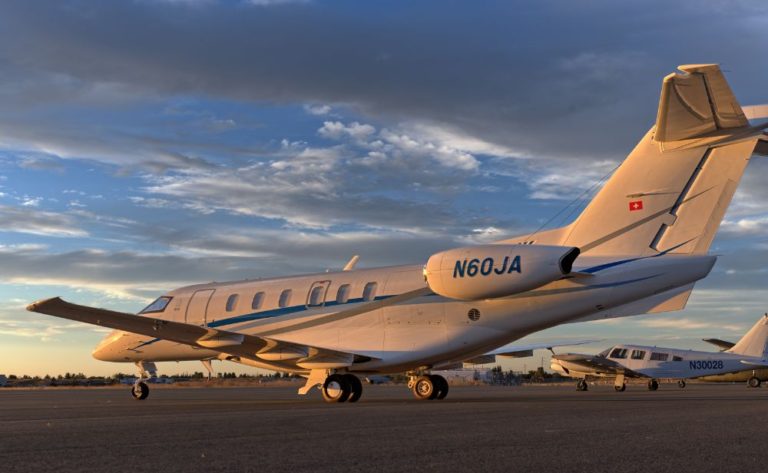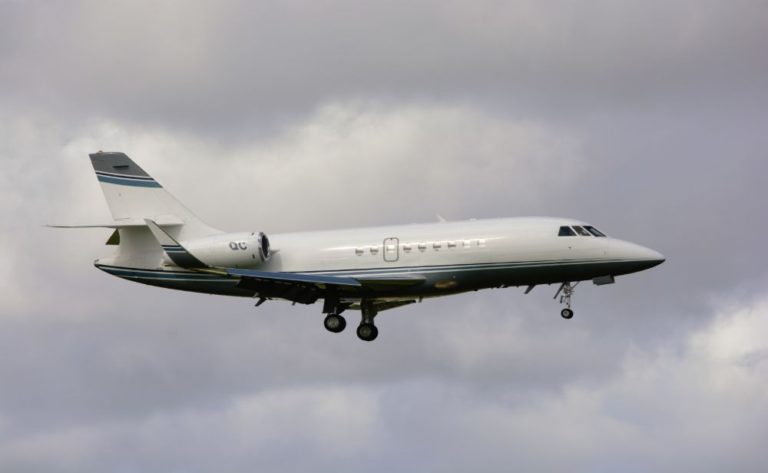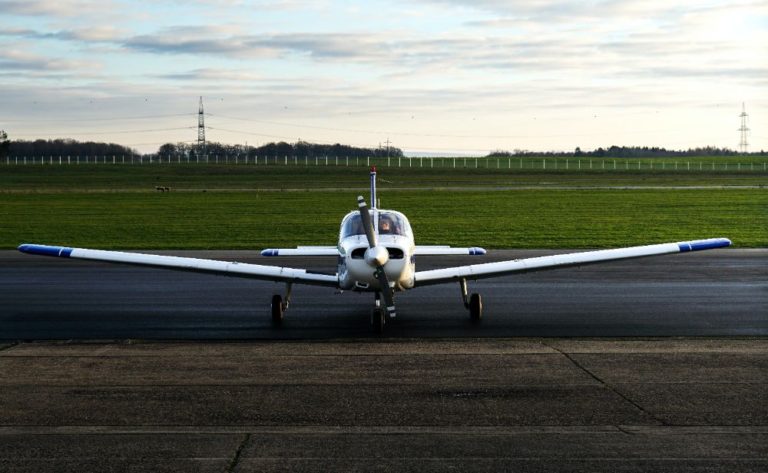Saab 2000: The Turboprop Airliner

In 1988, Saab began developing what they later dubbed the Saab 2000 with the goal of creating the most advanced turboprop available on the market at the time. Nevertheless, a little more than ten years later, Saab would begin manufacturing of the aircraft, having only manufactured 63 copies…
Despite the fact that it was technologically superior to many of its contemporaries that were powered by turboprops (and even some of its jet-powered competitors), it would go on to become one of the mass-produced regional airliners that was the least popular in the history of aviation.
Pre-Saab 2000
The idea of regional airliners was not a novel one until the Saab 2000 came up; in fact, it had been around for quite some time.
In point of fact, the 1930s and 1940s saw the introduction of service for the very first regional airliners, which included the DC-1 and DC-2. Despite this, their rise to prominence did not occur until the 1950s and 1960s, when they were at the height of their popularity.
Let’s jump ahead in time to the late 1970s. The Swedish aircraft manufacturer Saab, which was formerly best known for its production of military aircraft, has reached an agreement with the American aircraft manufacturer Fairchild Aircraft to collaborate on the production of a turboprop-powered regional airliner.
The aircraft, which was initially designated as the Saab-Fairchild SF340, was scheduled to make its maiden flight on January 25, 1983, and it would enter service the year after that. It was predicted that it would end up being quite popular among a wide variety of operators here.
However, Fairchild would completely exit the aviation business in 1985, which resulted in the company withdrawing from the transaction. As a direct result of this, Saab assumed complete control of the SF340 project and renamed it the Saab 340 to represent their newfound ownership.
In light of the fact that the Saab 340 was a huge commercial success, with approximately 400 units having been sold in a span of just five years, Saab planned to leverage on this success even further.
Saab came to the conclusion that there was a demand for a turboprop-powered regional aircraft with 50 seats (at the time, this would have been considered a relatively large regional jet), therefore they chose to employ a stretcher form of their Model 340 for this new airliner.
Development
The development of the Saab Model 340 began in 1988, and the first thing that Saab did was extend the length of the fuselage by 25.55 feet (24 ft 9 in). Because of this approach, Saab was able to offer airlines this new airliner in two different configurations, based on the requirements of each individual airline.
The first was roomier and had a total capacity of fifty passengers, with a seat pitch of thirty-two inches for each individual passenger (81 cm). The second was not as roomy as the first and could accommodate around 58 passengers with a seat pitch of 30 inches (76 cm).
The wingspan of the Saab 340 was increased by 15%, taking it from 21.44 metres (70 ft 4 in) to 24.76 metres (81 ft 3 in), which is a difference of 3.32 metres. This was done so that the pilot would have more control of the aircraft (10 ft 11 in).
Saab plans to replace the General Electric CT7-9B engines that power the Model 340 with the more powerful Allison/Rolls-Royce AE 2100P engines. This will allow the company to offset the additional weight of the new aircraft while also improving its range and cruising speed.
Saab would label this new aircraft as the Saab 2000, with the internal designation of the Saab Model 2000 (or “Model 2000” for short), which would make its maiden flight on March 26, 1992. Saab would have a functional prototype of this new airliner by the beginning of 1992.
After this, Saab made the announcement that the first Saab 2000s will be entering service in the beginning of the year 1994.
However, because of a fault that was discovered during flight testing with the Model 2000’s propellers, this would be delayed. Engineers from Saab would labour nonstop to find a solution to this problem, which ultimately resulted in significant portions of the propeller being redesigned.
The History of Operations
This would inadvertently push back the entrance date of the Saab 2000 from January 1994 to August 1994. The Saab would then enter service on August 30 of that year with the Swissair-owned Crossair regional airline.
The Saab would go on to have a pretty intriguing and eventful history of operations after this point…
Airline
Despite the fact that the first Saabs were put into service with Crossair, which is owned by Swissair, that airline would not be the only one to operate the aircraft. In point of fact, the Saab would be attractive to two categories of airlines: regional carriers and low-cost airlines.
In the case of regional airlines, the Saab would typically enter service with the regional subsidiary of a much larger airline, such as British Airways’ BA CityFlyer or the Air France-affiliated Regional Airlines and/or CityJet. Other examples include BA CityFlyer and Regional Airlines and/or CityJet.
In regional airline service, the Saab would be used to transport up to fifty passengers on short-haul (mostly domestic) routes. These routes would typically feed in from a regional airport to a main hub, where the passengers would then board another flight, which would typically be an international flight.
Alternately, these minor airlines would use the Saab to travel between two smaller regional airports in areas where there was a considerable demand for that service. These trips were almost always considered to be long-distance in comparison to European domestic routes, and they were frequently at the limit of the Saab’s range.
The Saab would be appealing not only to regional airlines but also to low-cost airlines as well. Because of this, they decided to purchase the larger Saab 2000 rather than one of the smaller turboprop versions of the same aircraft. This allowed them to carry a greater number of people (and thus earn more profit per flight).
Although this is not always the case, many of these low-cost airlines would pair them with the Saab 340 due to the high degree of part commonality that exists between the two aircraft, which makes maintenance significantly simpler. At this location, the 340 was used for shorter-range flights, and the 2000 was used for longer-range ones.
Deutsche AB, which eventually merged with airBerlin and became one of the largest operators of the Saab type, was by far the largest low-cost carrier that used the Saab. They operated five Saabs, making them one of the largest operators of the type.
Cargo
However, beginning in the late 2000s and continuing into the early 2010s, regional and low-cost airlines began to phase out their Saabs in favour of newer jets. This trend continued until the mid-2010s. They intend to saturate the market for secondhand cars with Saabs as a result of this.
In light of this, a number of less significant cargo carriers would use this to their advantage. You see, the Saab 340, which was the foundation for the Saab Model 2000, turned out to be an extremely profitable cargo aircraft, and many people assumed that the Saab 2000 would likewise be profitable.
After purchasing a large number of Saab 2000s from other airlines, these smaller cargo carriers would then pay a third-party company (rather than Saab, as they did with the Model 340) to have the airline interior removed from these aircraft and have it replaced with a cargo interior.
Early in the 2010s would see the introduction of the first Saab 2000 freighters, which would compete with the Saab 340 in many contexts because to their larger size and greater range (which many of these cargo operators also owned).
When it comes to cargo airline service, the Model 2000 is often used for short-haul flights. These routes are largely along the east and west coasts of the United States, or if operating in Europe, they are primarily domestic routes. In this area, it typically transports items of moderate quantity and low value.
Unfortunately, over the past few years, many cargo airlines have begun to phase out their Saab 340s and 2000s in favour of jets from the ERJ and CRJ100/200 families. This is due to the fact that these jets are not only more cost-effective to operate, but they are also significantly larger, which allows these cargo airlines to generate a greater overall profit from each flight.
After witnessing the success of the Saab 340 as a military aircraft, and more specifically as an airborne early warning and control (AEW&C) aircraft, various air forces would be eager to buy the larger Saab 2000 for use in a role comparable to that of the Saab 340.
To this purpose, the Pakistan Air Force (and, by extension, the Government of Pakistan) approached Saab in June 2006 about the possibility of purchasing an AEW&C-configured Saab 2000 that could compete with India’s two AEW&C-equipped ERJ-145s. This was done in an effort to meet the aforementioned goal.
After initially making an order for six aircraft, the government of Pakistan planned to renegotiate the deal and reduce the number of aircraft they would be purchasing from six to five. In this region, they were given the official designation of Saab E-2000 by the Pakistan Air Force (PAF).
As a result of this renegotiated deal, only four of the five Saabs will be outfitted with the Saab-Ericsson Erieye radar so that they can be used for AEW&C operations.
The remaining Saab E-2000 would double up as both a multiengine trainer and a VIP transport for high-ranking officials in the Pakistan Air Force (PAF). Both roles would be performed by the aircraft.
Sadly, a Taliban attack on Pakistan Air Force Base Minhas in August 2012 resulted in the destruction of one of Pakistan’s AEW&C-equipped Saabs. During that attack, two additional AEW&C-equipped Saabs sustained damage, but they were able to be repaired later.
In order to make up for this, Pakistan placed an order with Saab for an additional three Saab E-2000s, all of which have already been delivered.
In addition to its usage by the Pakistan Air Force, the Saab 2000 was also purchased by the Royal Saudi Air Force. The RSAF has also put the Saab to use as an AEW&C aircraft; in fact, it has taken the place of the Boeing 707-derived E-3 Sentry in the role of a short-range alternative.
Examination of the Flight
After demonstrating its worth in both commercial and military service, many people began to take notice of the Saab’s relatively slow stalling speed (for an aircraft of its size, anyway), noting that it would be an excellent choice for an airfield inspection aircraft. This led to the realisation that the Saab could be used as a great airfield inspection aircraft.
Even though there had been a lot of talk about it in the years leading up to it, the Japanese Civil Aviation Bureau, also known as the JCAB for short, would go ahead and place an order for two Saab 2000s, which would be delivered in November of 1998.
During its time in service with the JCAB, the Saab collaborated with the organization’s other aircraft (specifically the Cessna Citation CJ4, the NAMC YS-11, and the de Havilland Canada DHC-8) to conduct inspections of Japanese airfields. These inspections ensured that the airfields were kept up to date and were safe for use.
The Saab would spent hundreds of hours examining some of Japan’s largest and most well-known airports while operating out of the Tokyo Haneda airport as its home base.
Rising expenses of maintenance would force the JCAB to retire their fleet of two Saab 2000s, despite the fact that they had an outstanding service record. The JCAB would then replace the Saab’s flights with the three Cessna Citation CJ4s and one DHC-8 that they already had in their fleet.
After leaving this location, they were transported to the United States, where they were deregistered in Japan and reregistered in the United States, each with the registration number N201JA and N202JA respectively. After being kept in this area, they were later moved to an aviation graveyard in Arizona.
VIP Transport
Saab would create many variants of the Model 2000 aircraft, such as the signals intelligence (SIGNIT) and maritime patrol variants, in an effort to attract additional non-airline clients to purchase the aircraft. This would be done in an effort to increase sales of the Model 2000.
Saab would go so far as to create prototypes of these versions in order to increase the likelihood that organisations, mostly militaries, will purchase these variants. Despite this, Saab would go on to build three prototypes, none of which would ever be delivered to a paying customer.
Saab did not want to throw them away, so the corporation made some modest modifications to them and put them to use as the regional business jets for the company. These jets were used to transport the company’s C-suite executives all throughout northern Europe, mainly in Scandinavia and Germany.
After a number of years had passed, airlines would eventually start getting rid of their Saabs in favour of more modern regional jets. When there were a lot of used Saabs 2000s flooding the market, affluent people and corporations would buy them all up and turn them into private jet-style aircraft.
The Saab would be purchased by a number of different NASCAR teams in particular. In this situation, it might be used to transport the driver and their entourage, which can typically include as many as 15 people, at a cost that is significantly lower than travelling on a private aircraft such as the G650 or the Global 5500.
In addition to being used by NASCAR teams, the Saab would also become highly popular as the short-haul business aircraft for General Motors.
To begin with, it would be used to transport the company’s top executives throughout the northeastern region and up and down the east coast. This would be done for the same reason that it is more cost effective than utilising a jet-powered private plane to transport the same number of passengers!
Charter
You can hire a Saab instead of buying a used one if you don’t have the funds to do so (or if you simply don’t want to take the danger of losing all of your money!). And certainly, you are able to charter one in whatever arrangement that you like…
For instance, if you are interested in chartering a turboprop airliner that has the capacity to carry more than 50 passengers, the Saab 2000 is the aircraft that you should check into. What do you think? There are presently hundreds of businesses that can, for a price, provide Saabs with airline seating configurations.
According to the leaders of several large aircraft charter companies, the airline-configured Saab is actually the most popular airline-configured turboprop that they currently offer (despite the fact that they offer almost every other turboprop that has ever been built as well!). In other words, the Saab is currently the most popular airline-configured turboprop.
Let’s imagine you required to transport a moderate amount of low-value goods (or a modest amount of high-value cargo), there are even more businesses that are selling cargo-configured Saabs regardless of where in the world you are located.
In the same vein, if you wish to travel in the lap of luxury, there are several executive air charter firms who currently offer VIP Saab 2000s. These Saabs are often retired airline Saabs that have been modified for use as VIP transport by a subsequent owner.
The cost of chartering a Saab 2000 is approximately $6,000 per hour as of right now. This cost, however, might vary depending on who you fly with, the configuration of the Saab, the route, the time of year, and other factors.
Specifications
It is only inevitable that the Saab 2000 and the Saab 340, which served as the inspiration for the Saab 2000, would share some of the same technical and physical specifications.
However, given that they are two different types of aeroplanes, it is only normal for some of their specifications to be different. The Saab 2000 was designed to be an improved replacement for the older Saab 340…
Why did the Saab 2000 meet with such poor sales?
At the time, the Saab 340 was widely considered to be one of the best regional airliners available. It was in part due to this success that Saab decided to develop the Model 2000 based on their Model 340; nevertheless, the Model 2000 was never able to duplicate the success that the Saab 340 had…
Only 63 Saab 2000s would be constructed over a period of seven years (1992-1999), making it the least popular aircraft of the latter half of the 20th century and one of the least popular regional airliners in the annals of aviation history! Therefore, it begs the question, why is this the case?
In contrast to the failures of other airlines, the Saab’s demise was not caused by a single factor in particular but rather by multiple factors whose effects compounded over time.
To begin, the Saab was a vehicle that carried a very high price tag. It was the most expensive turboprop that could be purchased on the market at a price of 15 million dollars. In comparison, more recent models of regional aircraft, such as the ERJ-135 and CRJ100, have a price tag of $15 and $18 million respectively.
However, it was not only more expensive to acquire; it was also more expensive to operate once it was in use. When compared to the ERJ-135 and the CRJ100, the Saab has about twice the amount of operating expenses per seat, despite the fact that it can carry less passengers.
Beyond this, in the early 1990s, the market for regional airliners started shifting away from turboprops and toward jets like the ERJ-135 and CRJ100. These jets are examples of what are known as regional jets.
But Saab chose to disregard this information and keep working on creating a turboprop-powered version of the Saab 2000. This is in contrast to what Embraer did with its EMB-120 and ERJ-135 jet-powered versions of the same aircraft!
To make matters even worse, Saab chose to promote it exclusively in Europe. Although it is undeniable that the aviation market in the United States is one of the greatest in the world, Saab completely ignored this fact, despite the fact that there were numerous airlines in the US that were interested in purchasing the aircraft but were unable to do so.
Only one airline located in the United States purchased the Saab, and that airline was PenAir, a regional carrier based in Alaska. PenAir owned and operated a fleet of five Saabs at the time of its purchase.
How Risky Was It To Drive A Saab 2000?
Over the course of the past several years, a number of high-profile aviation events have brought the topic of aviation safety to the forefront of everyone’s consciousness. Consequently, this raises the question: how risky was the Saab 2000 to drive?
The Saab 340, which served as the basis for the Saab Model 2000, was naturally safe; hence, the Saab Model 2000 should, at the very least in theory, be quite safe… Despite the fact that the Saab 340 was essentially safe, the Model 2000 was not.
This is when things start to get a little bit complicated.
Only eight of the 63 Saabs that have ever been manufactured were involved in some form of aviation-related accident or mishap. In spite of the fact that this may not appear to be a significant number, putting it into numerical terms reveals that 12.7% of all Saabs 2000s ever manufactured were involved in an accident of some kind.
As a point of comparison, there have been fatal accidents involving only 4% of all 747s that have ever been manufactured; hence, the 747 is widely regarded as one of the safest aircraft to ever take to the skies.
However, before we start calling the Saab 2000 one of the most dangerous aircraft that have ever flown, we should note that of those eight crashes, only one resulted in fatalities. This should be taken into consideration before we start calling the Saab 2000 one of the most dangerous aircraft that have ever flown. Even so, there was only one person who lost their life.
The Model 2000 is now significantly safer than the Saab 340, despite the fact that it still has one more fatality than we would prefer (in terms of fatalities at least).
When looking at the accident reports, it does not appear that any of the crashes were the result of the aircraft itself; rather, it appears that the crashes were the result of either ATC or pilot mistake — for example, crashing into a mound of dirt or crashing into a locked hangar door!
In the end, the Saab is still a reasonably safe mode of transportation; nevertheless, if you have the option of flying on a regional jet instead, you should choose the jet.
Legacy
We have started to see a legacy beginning to grow as the Saab is almost completely phased out of service (there are just six still in operation around the world as of the time this article was written). This legacy is one that is surprisingly big given the relative failure of the aircraft…
Saab
It is a common misconception that the Saab 340 was the first commercial aircraft that Saab ever constructed; however, this is not the case. Instead, it was the Saab 90 Scandia, and it was produced by the company between 1946 and 1954, although they only sold a total of 18 of them.
Saab made the decision to give up after developing three commercial airliners, two of which (the Saab 90 and 2000) were a complete and utter failure. As a result, Saab opted to give up for the second time in company history.
Saab has decided to permanently stop building commercial aircraft, but they will continue to make military aircraft. This leaves the “big four” aircraft manufacturers as the only companies who create aircraft (Boeing, Embraer, Bombardier and Airbus).
As a result, Saab has been freed up to concentrate on growing the company’s portfolio of military aircraft. Saab only had a few fighter jets under their belt when they produced the 340 and 2000 models of their aircraft. Even now, they continue to manufacture the very same fighter jets, in addition to a jet trainer.
In addition to this, they are members of a group that is working toward the development of a fighter aircraft of the sixth generation (for reference, the F-35 is only a fifth generation fighter).
Future Aircraft
Although the demise of the Saab would not put an end to the idea of turboprop-powered regional airliners entirely, it would make it clear to many aircraft makers that the demands of the industry were shifting.
Businesses like de Havilland Canada and ATR would continue to produce their DHC-8, ATR 42, and ATR 72 designs, and they would continue to develop new variants of these airliners (especially the DCH-8) with a great deal of caution. Despite this, the companies would continue to build their aircraft.
When it came to the production of fresh new regional airliners, however, the aircraft were nearly always jet-powered and were frequently developed with the support of many other aircraft manufacturers in case anything went wrong.
Surprisingly, despite this, fresh new turboprop-powered regional airliners have not completely disappeared from the market. Cessna has introduced two new turboprop-powered regional airliners over the past few years: the Cessna 208 Caravan and the Cessna 408 SkyCourier. Both of these aircraft were designed and built by Cessna.
I’m interested to hear your thoughts on the Saab 2000. Have you ever taken a flight on that? Share your thoughts with me below!
